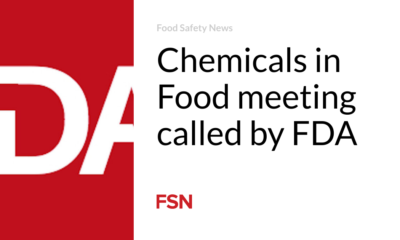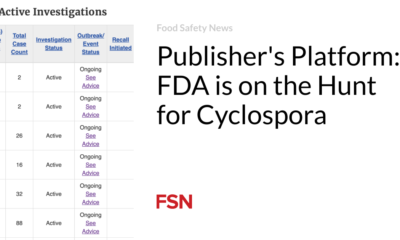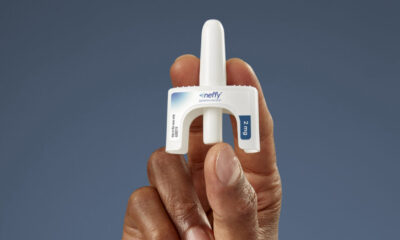Health
FDA OKs Purdue Pharma’s New Overdose Drug

PUrdu Pharma, The company best known for fueling the opioid crisis by misleadingly marketing the infamous painkiller OxyContin won approval Wednesday for a new auto-injector device used to reverse opioid overdoses.
The announcement represents the latest in a series of recent approvals for products that use nalmefene, essentially a more potent version of its better-known chemical cousin, naloxone.
The Food and Drug Administration’s approval of Zurnai, as the device is known, also underscores Purdue’s ongoing efforts to play a role in the nationwide response to the opioid crisis.
“The FDA remains focused on expanding access to opioid overdose reversal agents, including naloxone and nalmefene,” Robert Califf, the agency’s commissioner, said in a statement. “Today’s approval adds a new nalmefene product and route of administration to support expanded options for reversing opioid overdose.”
The approval is likely to spark anger on several fronts.
First, in the midst of the overdose epidemic, Purdue is seen as a national villain. Questionable marketing tactics for OxyContin in particular are blamed for the turbocharging, which began in the late 1990s and caused a wave of opioid addiction. The company and its founders and owners, the Sackler family, have been the subject not only of numerous lawsuits, but also of major books and TV shows.
Many corners of the addiction treatment community view Purdue with great suspicion and are outraged by the company’s attempts to play a role in addressing the crisis it helped create. In its statement, the company noted that it plans to sell Zurnai at cost, and that it will also not make a profit on its existing nalmefene drug, which is used in hospitals.
“Zurnai could be an important new tool to save lives at critical times,” said Craig Landau, the company’s president, in a statement. “We are committed to delivering solutions to address the opioid overdose crisis and are working to deliver Zurnai on a not-for-profit basis.”
Second, the FDA’s approval comes amid a broader debate over the power of overdose-reversing drugs such as naloxone and, more recently, nalmefene.
As fentanyl has overtaken heroin and prescription opioids as the leading cause of overdose deaths, overdose responders have reported that victims respond more slowly to standard doses of naloxone. Some first responders and harm reduction groups have responded by incorporating new techniques into their protocols, such as ventilation. Others have simply administered more doses of cheap, injectable naloxone or even more expensive nasal spray products like Narcan.
But the perceived need for larger doses of naloxone has also led to what many public health experts consider an unnecessary arms race in the pharmaceutical industry. Over the past decade, about a half-dozen companies have rushed to develop high-dose, mechanically complex versions of naloxone that they can sell for hundreds or even thousands of dollars.
It is unclear whether the high-dose products are more effective. But the way they work – by outcompeting opioid molecules in a battle for access to brain receptors – is known to cause severe withdrawal symptoms. In turn, people who have recently recovered from an overdose will often leave the care of hospitals or first responders if their symptoms are ignored. More importantly, they tend to use it again in an attempt to avoid the withdrawal symptoms, risking overdose and possibly death.
Although nalmefene works similarly, it is much more powerful than naloxone. Many harm reduction groups have expressed skepticism that the drug is more effective at reversing overdoses and warn that the harms of inducing more severe withdrawal symptoms may still outweigh the potential benefits.
The FDA’s decision also comes amid ongoing controversy surrounding Purdue and the Sackler family, which still owns the Connecticut-based company.
In June, the Supreme Court agreed to a settlement agreement between Purdue and dozens of states and local governments that would have ordered the Sacklers to pay out as much as $6 billion.
The deal would have allowed Purdue to emerge from bankruptcy as a restructured company whose profits would be used for addiction treatment and prevention. But it was especially notable because it granted the Sacklers immunity from civil lawsuits arising from the company’s role in the opioid crisis. In a 5-4 decision that transcended the justices’ political ideology, the court ruled that the bankruptcy code has no mechanism to grant immunity from civil lawsuits.













